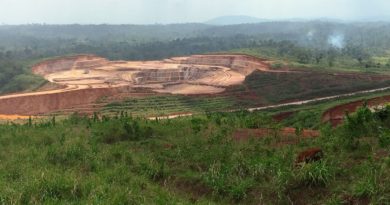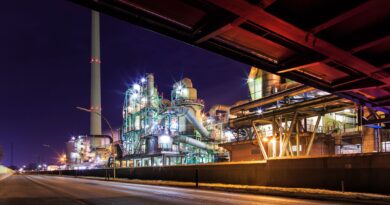Rio Tinto: copper production up by just over 3%, iron ore 2% higher
MELBOURNE, Australia – Q4 2023 operational highlights and other key announcements
- Pilbara operations produced 331.5 million tonnes (100% basis) of iron ore, 2% higher than 2022. Improved productivity, supported by ongoing implementation of the Safe Production System, and the ramp up of Gudai-Darri to its nameplate capacity of 43 million tonnes per annum, within 12 months of commissioning, more than offset mine depletion. Shipments were 331.8 million tonnes (100% basis), 3% higher (+10 million tonnes) than 2022 and the second highest on record, with healthy inventory positions at year-end.
- On 18 October, we announced plans to increase iron ore production capacity at Gudai-Darri by 7 million tonnes to 50 million tonnes a year through incremental productivity gains, at a cost of around $70 million. The capacity increase is subject to environmental, heritage and other relevant approvals.
- Bauxite production of 54.6 million tonnes in 2023 was unchanged from 2022. Operations saw a continued improvement in the fourth quarter, with production 8% higher than the prior quarter, following the challenges of higher-than-average rainfall at Weipa in the first quarter and equipment downtime at both Weipa and Gove in the first half.
- Aluminium production of 3.3 million tonnes was 9% higher than 2022 after we returned to full capacity at the Kitimat smelter and completed cell recovery efforts at Boyne during the third quarter. All other smelters continued to demonstrate stable performance.
- On 1 December, we announced the completion of a transaction to form the Matalco joint venture. Following receipt of all regulatory approvals, we acquired, and settled payment for, a 50% equity stake from Giampaolo Group for $0.7 billion, subject to usual closing adjustments. Matalco will remain the operator of the joint venture’s one Canadian and six US sites which have a combined annual capacity of ~900 thousand tonnes. Production from Matalco in 2023 was 582 thousand tonnes of recycled aluminium with Rio Tinto marketing these products from 1 December 2023.
- Mined copper production of 620 thousand tonnes (consolidated basis) was 2% higher than 2022 reflecting first sustainable production from Oyu Tolgoi underground in the first quarter and a full year of increased ownership of Oyu Tolgoi. This offset challenges at Kennecott following the conveyor failure in March, with the concentrator not returning to full capacity until the third quarter.
- Refined copper production of 175 thousand tonnes was 16% lower than 2022 as we undertook the largest rebuild of the smelter and refinery in Kennecott’s history across the second and third quarters. With the smelter rebuild successfully completed and the ramp-up progressing, we expect a return to stable production in the first quarter of 2024.
- On 8 November, we completed the acquisition of PanAmerican Silver’s stake in Agua de la Falda and entered a joint venture (known as Nuevo Cobre) with Corporación Nacional del Cobre de Chile (Codelco) to explore and potentially develop copper assets in Chile’s prospective Atacama region.
- Titanium dioxide slag (TiO2) production of 1,111 thousand tonnes was 7% lower than 2022. Two furnaces at our RTIT Quebec Operations remain offline following process safety incidents in June and July. In the fourth quarter, we decommissioned an additional furnace, which is due for reconstruction in 2024.
- IOC production of 9.7 million tonnes, was 6% lower than 2022 with challenges due to the wildfires in Northern Quebec in the second quarter, as well as extended plant downtime and conveyor belt failures in the third quarter.
- We are now deploying our Safe Production System at ~60% of our sites, with implementation at various stages of maturity. Key performance highlights include a 20% yearly improvement in AIFR globally where the Safe Production System has been deployed, as well as a 5 million tonne uplift in iron ore production. With eight Safe Production System deployment sites having achieved their best ever demonstrated production in recent months, we are well positioned to deliver our 2024 priorities, including a further 5 million tonne uplift at our Pilbara operations.
- On 6 December, we held our Investor Seminar in Sydney where we provided an update on our long-term strategy of investing with discipline to strengthen operations, delivering growth in a decarbonising world and continuing to generate attractive shareholder returns. We gave an update on the world class Simandou iron ore project in Guinea, as well as our decarbonisation investments, with our commitment to halve Scope 1 and 2 emissions by 2030 remaining unchanged.
- The full year cash outflow from an increase in working capital was comparable to the first half ($0.9 billion outflow in the first half of 2023). This movement was driven by healthy stocks in the Pilbara, still elevated in-process inventory at Kennecott following the smelter rebuild and weaker market conditions including for titanium dioxide feedstock. Receivables also reflected a higher iron ore price at the end of 2023 that will be monetised in 2024. Operating cash flow was also impacted by lower dividends from Escondida.




